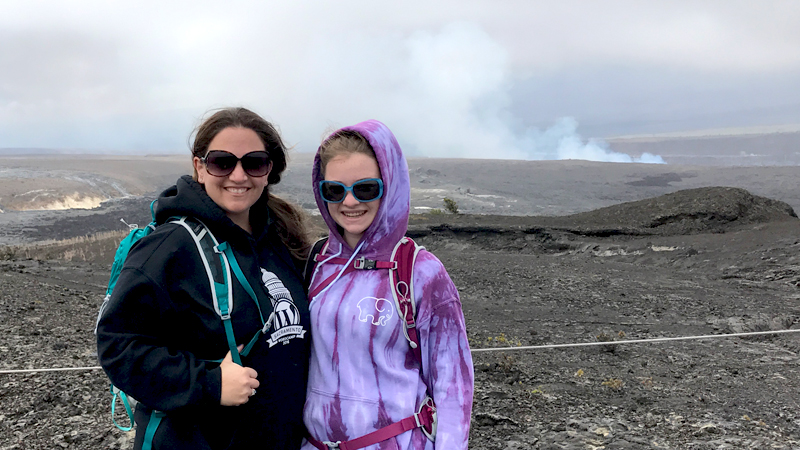
Hawai’i Volcanoes National Park is open 24 hours a day, everyday, year round.
Touring the national park by car is easy and there are many short stops along the side of the roads that are easily accessible and don’t require much effort or lots of hiking. Two main paved roads will take you to all the amazing things to do in the park:
Crater Rim Drive used to take you all the way around the rim of the Kīlauea Caldera at the summit of Kīlauea Volcano in a single loop. But the road, between Chain of Craters Road and Jaggar Museum was closed indefinitely due to vehicles the fumes and ashfall from the vent that opened within Halemaʻumaʻu Crater in March 2008. However, thanks to a sulfur dioxide monitoring network and air quality monitoring tools, the section of Crater Rim Drive from the Devastation Trail parking lot to Keanakāko’i Crater has been reopened to foot traffic only.
The closure on Crater Rim Drive changes up how you adventure through Hawai’i Volcanoes National Park. Today, your adventure starts at the Kīlauea Visitor Center and Volcano House (across the street from each other) where you can:
- Turn right and follow Crater Rim Drive to the Steaming Bluff and Steam Vents, the Sulfur Banks, the Kīlauea Overlook, and Jaggar Museum with an overlook of Halema’uma’u Crater.
- Turn around and retrace your drive back toward the Visitor Center, pass the Visitor Center and follow Crater Rim Drive in to other direction to the Kīlauea Iki Overlook, Thurston Lava Tube, Devastation Trail, Pu’u Pua’i Overlook, and Keanakākoʻi Crater.
- Or, you can begin by driving to Jaggar Museum and following Crater Rim Drive all the way to the Devastation Trail parking lot and Keanakākoʻi Crater — we didn’t do that because its what everyone does and the Jaggar Museum is very crowded first thing in the morning. We usually follow the opposite order of activities so things are less crowded!
Below is a list of all the things to do along the scenic Crater Rim Drive in Hawai’i Volcanoes National Park — click the pink buttons to learn more about each attraction:
Kīlauea Visitor Center

The start of your Crater Rim Drive adventure.
The Kīlauea Visitor Center, located near the entrance to Hawai’i Volcanoes National Park, is the first stop for almost all of the 2.6 million visitors to Kīlauea Volcano. The Visitor Center features exhibits on island formation, the arrival of life, ecosystems from sea to summit, the sights and sounds of the rain forest, invasive species, and those who make a difference in resource protection and 24/7 access to park maps and information posted in a covered outdoor area.
At the Visitor Center, you can get the latest information on trails, ranger-led activities, road conditions, and safety precautions. Don’t underestimate the importance of this information! Because of the dynamic nature of the two active volcanoes in the park, conditions can change rapidly.
Volcano House
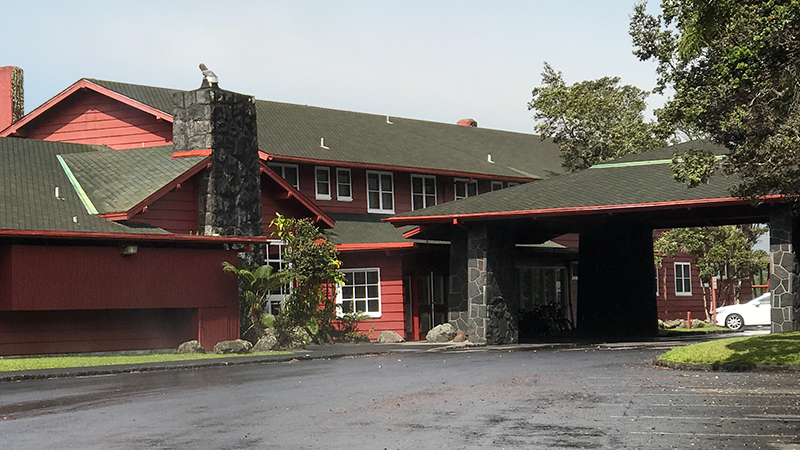
318 feet (across the street) from the Kīlauea Visitor Center.
Volcano House, with 33 historic guest rooms, is the only hotel in Hawaii Volcanoes National Park and Hawaii’s most unique hotel location. Volcano House overlooks Halema’uma’u Crater at the summit of Kilauea and has two restaurants, a snack bar and lounge, two gift shops, and a pressed penny machine (which made Carter very happy). If you stay in a Crater View Room, you’ll be able to see the red glow of lava from the Halema’uma’u eruption from your bed!
Steam Vents And Steaming Bluff
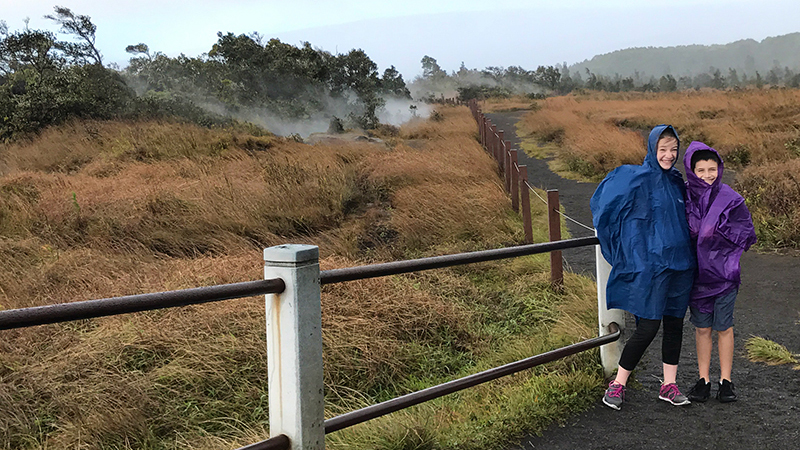
0.7 miles from the Kīlauea Visitor Center, traveling right on Crater Rim Drive.
Several trails lead from the parking lot to fenced off steam vents releasing large plumes of clean steam into the air. Steam vents are created by ground water that seeps down to the hot volcanic rocks and returns to the surface as steam.
The walk from the steam vents parking area to Steaming Bluff is 0.25 miles round trip. Steaming Bluff is a series of ground cracks along the edge of Kīlauea Caldera that pour out steam. Here you get a new perspective on the enormous caldera.
Ha’akulamanu — Sulphur Banks
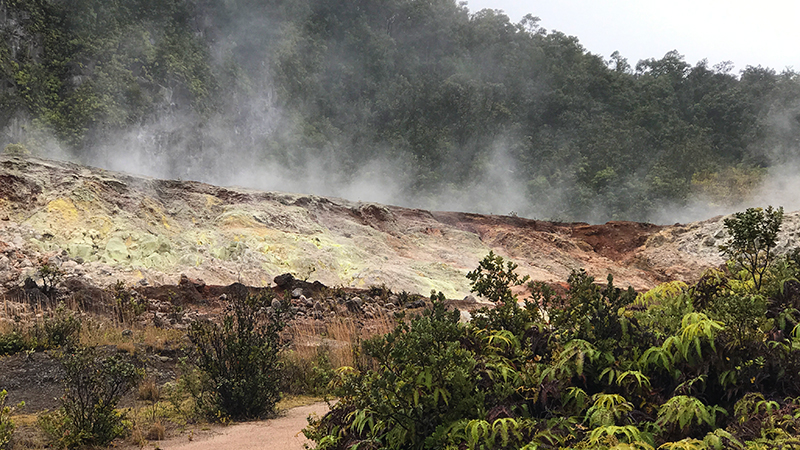
0.7 miles from the Kīlauea Visitor Center across from Steaming Bluff and Steam Vents.
At Sulphur Banks, known as Ha’akulamanu, volcanic gases seep out of the ground along with groundwater steam. These gases are rich in carbon dioxide, sulfur dioxide and hydrogen sulfide — the gas that smells like rotten eggs. Some sulfur gases deposit pure crystals at Sulphur Banks. Other sulfur gases form sulfuric acid which breaks down the lava to clay. This clay is stained red and brown with iron oxide.
Sulphur Banks Trail is an easy 1.2 mile round trip walk on a paved trail and wooden boardwalk to an area where volcanic gases deposit colorful sulfur crystals and other minerals.
Kīlauea Overlook
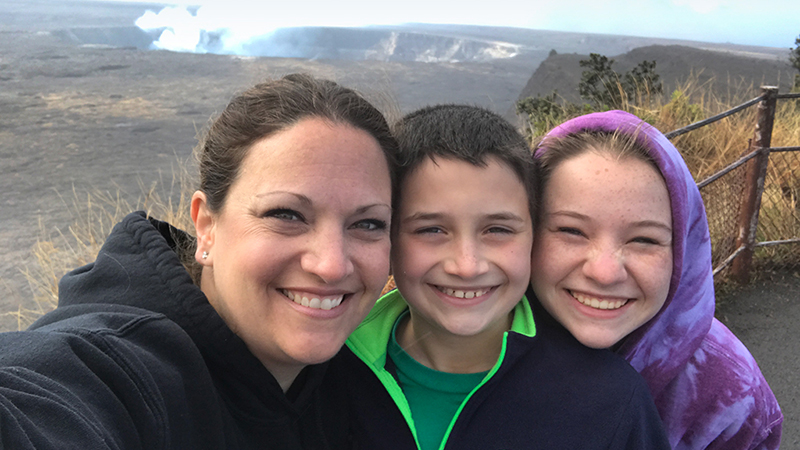
2.2 miles from the Kīlauea Visitor Center, 0.7 miles from the Steam Vents and Sulfur Banks.
The Kīlauea Overlook has basically the exact same view of Halema’uma’u Crater within Kīlauea Caldera as the Jaggar Museum Overlook. The only real difference between the two scenic vista points is that the Jaggar Museum is very crowded and has interpretive displays, and the Kīlauea Overlook (and picnic area) is practically deserted.
Jaggar Museum, Kilauea And Halema’uma’u Overlook
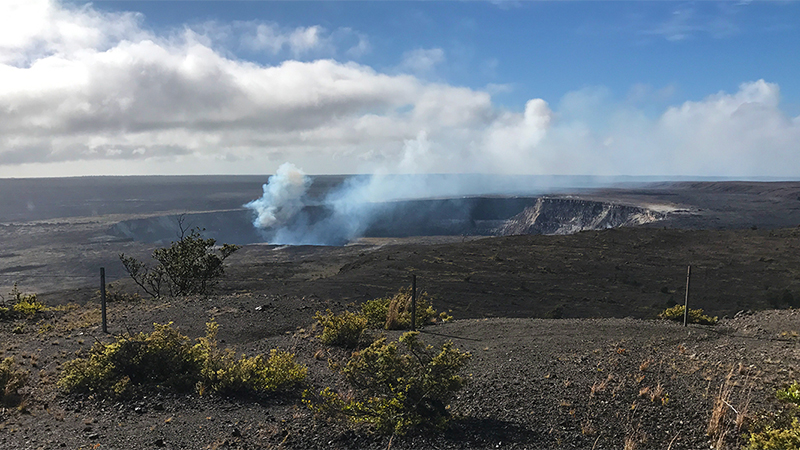
2.5 miles from the Kīlauea Visitor Center, 0.6 miles from the Kīlauea Overlook.
The Thomas A. Jaggar Museum is a museum on volcanology with displays of equipment used by scientists to study the volcano, state-of-the-art seismographs, an exhibit of clothing and gear from scientists who got too close to lava, and video screens showing footage of lava flows. There are also several Hawaiian cultural exhibits and a gift shop with books, videos, maps, shirts, souvenirs, and other items for sale.
The Jaggar Museum Overlook provides panoramic views of Kīlauea Caldera, interpretive displays about one of the world’s most active volcanoes, and breathtaking views of Halema’uma’u Crater.
Kīlauea Iki Overlook
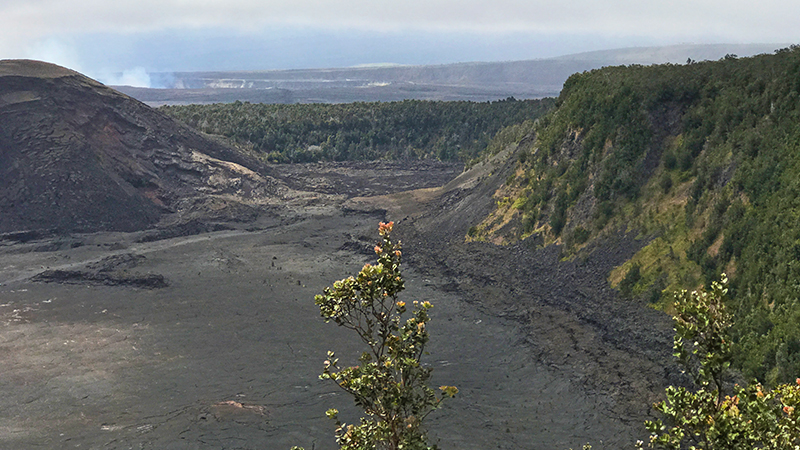
1.5 miles from the Kīlauea Visitor Center, traveling left down Crater Rim Drive.
The Kīlauea Iki Overlook provides visitors magnificent views of the black Kīlauea Iki crater floor. Today the 5,280 foot long, 3,000 foot long wide, 400 foot deep crater is pretty calm, but back in November of 1959 it erupted shooting hot, molten lava into the air as high as 1,900 feet and creating a 414 foot deep lake of bubbling lava.
This is the trailhead for the Kīlauea Iki Trail, a four mile, moderate/challenging, loop trail that travels around the rim of the Kīlauea Iki Crater and across the crater floor.
Nāhuku — Thurston Lava Tube
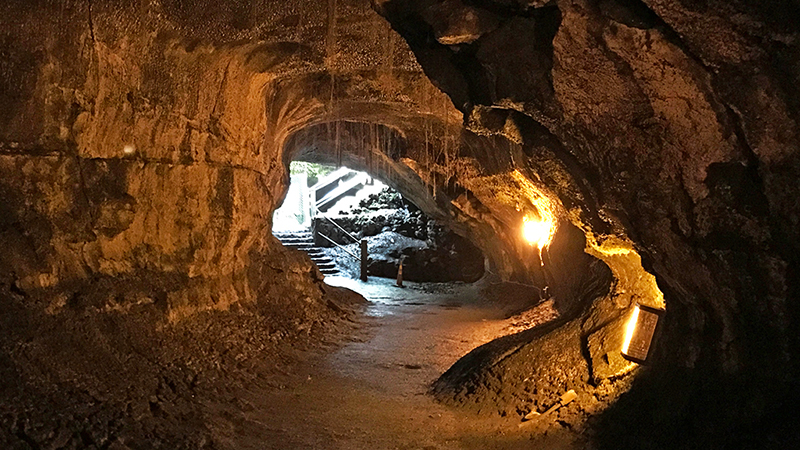
2.0 miles from the Kīlauea Visitor Center, 0.5 miles from the Kīlauea Iki Overlook.
The 20 minutes, 0.4 mile Thurston Lava Tube loop trail leaves from the parking area, passes through a dense, green, fern-covered forest, across a small bridge, and through a remarkable 400 foot long, 500 year old lava tube.
Pu’u Pua’i Overlook
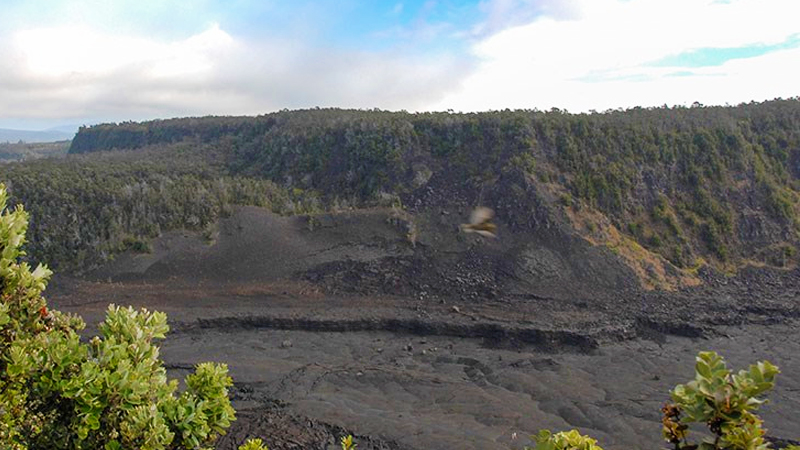
3.2 miles from the Kīlauea Visitor Center, 1.2 miles from the Thurston Lava Tube.
The Pu’u Pua’i Overlook is a scenic vista point with views of the Pu’u Pua’i Spatter Cone and Kīlauea Iki Crater. The Pu’u Pua’i Cone was created during the molten lava fountains of the 1959 eruption when winds carried lava pumice cinders to this spot. The cinders were so hot they elded themselves together to create a spatter cone.
The overlook is also the upper trailhead for Devastation Trail. This Hawai’i Volcanoes National Park scenic overlook was closed during our visit due to winds blowing volcanic gases into the area, so I grabbed this photo from the park website.
Devastation Trail
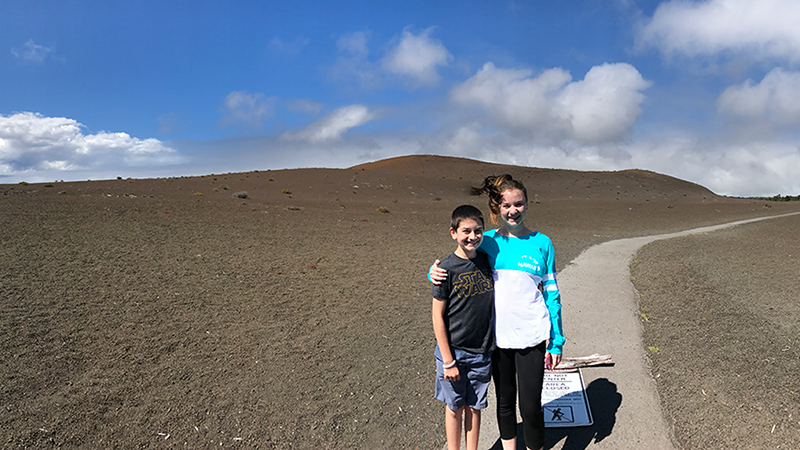
3.3 miles from the Kīlauea Visitor Center, 0.5 miles from the Pu’u Pua’i Spatter Cone.
Devastation Trail is an easy, paved 0.5 mile out and back paved trail (one mile total) through a breathtakingly stark landscape buried by cinders from the Kīlauea Iki eruption to the Pu’u Pua’i Overlook. Unlike other volcanic areas in the national park covered in thick, rough a’a lava flows and smooth, wavy pahoehoe lava flows, Devastation Trail is surrounded not by a hard basaltic lava flow, but by a thick blanket of loose pumice.
Keanakākoʻi Crater
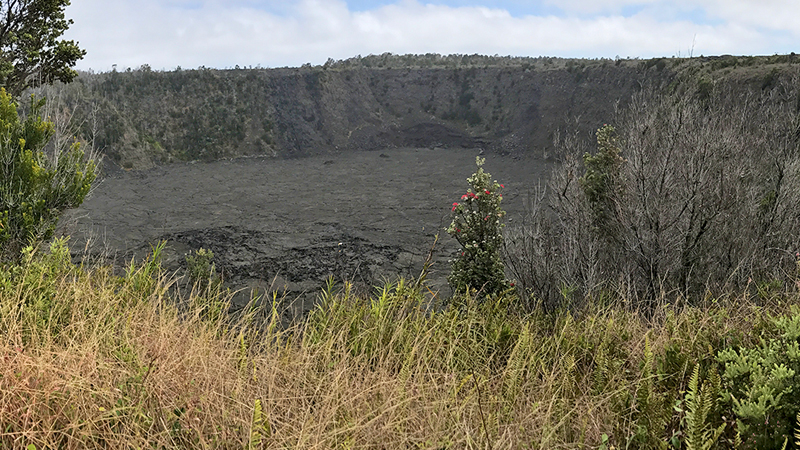
4.1 miles from the Kīlauea Visitor Center, 0.8 miles from the Devastation Trail parking area.
Keanakāko’i Crater, formed during the 1400s, is a 115 foot deep pit crater sitting on the boundary fault that encircles Kīlauea’s summit. From the roped overlook across the street from Keanakāko’i, you can see the fissures with still-smoking fumaroles from the 1974 Kīlauea eruption that lasted from July 19-23.
Know Before You Go
- Hawai’i Volcanoes National Park is located off HWY 11, Hawai’i 96718 on the southeastern part of the Island of Hawai’i, in the districts of Ka’ū and Puna. It is 30 miles from Hilo, 96 miles from Kailua-Kona, and 125 miles from Waimea through Hilo via HWY 19 and HWY 11.
- Admission fee is $25.00 per personal vehicle and is good for seven days. Free admission days are on Martin Luther King, Jr. Day, the first day of National Park Week, National Public Lands Day, and Veterans Day.
- It’s okay to wear sandals or flip flops, but bring tennis shoes in case you want to hike.
- The weather may be hot and humid and cool, windy, and rainy all in the same day. Come come prepared with layers, raingear, jackets, gloves and hats.
- Other than a few snacks for sale at the Kīlauea Visitor Center and Jaggar Museum, there is nowhere to get food or drinks anywhere in the park. Be sure to bring a lot of water, food, and snacks, especially if you plan on doing any hiking.
- On Crater Rim Drive, water and restrooms can be found at the Kilauea Visitor Center, the Jaggar Museum, and the Thurston Lava Tube.
- Pay attention to warning signs. Volcanic fumes are hazardous to your health. Visitors with heart or breathing problems and infants, young children, and pregnant women are at risk and should avoid Halema’uma’u Crater, Sulfur Banks, and areas where volcanic fumes are present.
That’s It!
And that’s it, we’ve covered everything from scenic overlooks and museums to hiking trails, lava tubes, and stinky sulfur banks, documenting all the things to do along Crater Rim Drive in Hawai’i Volcanoes National Park. Next up is an adventure down the other main road in the park, Chain Of Craters Drive, which stretches 18 miles to the beautiful Hawai’i and includes a breathtaking sea arch, ancient Hawaiian petroglyphs, scenic lookouts, vast lava flows, and more.